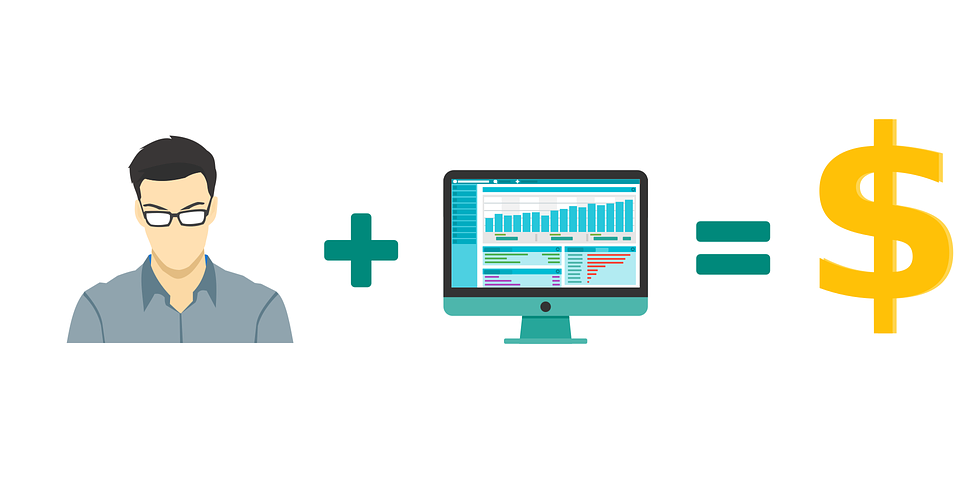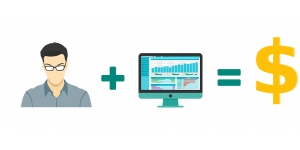
5 Frequently Asked Questions About Fiscal Years in Accounting
 The term “fiscal year” is often used in accounting. Many businesses use it to categorize their financial information. Rather than grouping transactions by the calendar year in which they occurred, they group transactions by the fiscal year in which they occurred. Below are five common questions and answers about fiscal years in accounting.
The term “fiscal year” is often used in accounting. Many businesses use it to categorize their financial information. Rather than grouping transactions by the calendar year in which they occurred, they group transactions by the fiscal year in which they occurred. Below are five common questions and answers about fiscal years in accounting.
#1) Are Fiscal Years the Same as Calendar Years?
Fiscal years are not the same as calendar years. A calendar year begins on January 1 and ends on December 31. A fiscal year, on the other hand, can begin and end on different dates. It’s simply a year-long accounting period that’s used to categorize financial information.
#2) How Long Are Fiscal Years?
While they can start and end on different dates, fiscal years are always 12 months long. Like calendar years, they consist of 365 days that span a 12-month period. The main difference is that calendar years always begin on January 1 and end on December 31. Fiscal years, on the other hand, may or may not begin and end on these dates. They may begin on February 1, for instance, and end on January 31st.
#3) Does the IRS Allow Fiscal Years for Tax Filings?
You might be wondering whether the Internal Revenue Service (IRS) allows fiscal years for tax filings? When filing your taxes, you’ll have to submit income and business-related expenses for the given year. The IRS typically requires the use of calendar years for tax filings. With that said, the IRS does make exceptions. To use fiscal years when filing taxes, you’ll have to get approval from the IRS. Only after getting the IRS’s approval can use fiscal years when filing taxes.
#4) What Benefits Does Fiscal Year Accounting Offer?
Fiscal year accounting offers benefits over calendar year accounting. Many businesses use it to delay tax liabilities. It won’t eliminate the burden of taxes. Rather, fiscal year accounting allows businesses to postpone the date on which tax liabilities must be paid.
#5) Can You Switch From Calendar Year to Fiscal Year Accounting?
Even if you’ve used calendar year accounting in the past, you may be able to switch to fiscal year accounting. With that said, switching to fiscal year accounting can be difficult. It also requires the approval of the IRS. For these reasons, you may want to continue using calendar year accounting, assuming you’ve already been using it.
Have anything else that you’d like to add? Let us know in the comments section below!

The Beginner’s Guide to Operating Costs in Accounting
 Operating costs are an essential part of accounting. In the world of business, you have to spend money to make money. Regardless of what your business sells — physical products, digital products, services, etc. — it will incur costs. Failure to track your business’s operating costs may result in decreased cash flow and lower profit margins. Alternatively, your business may fail to turn a profit if it has high operating costs. What are operating costs exactly, and how do you lower them?
Operating costs are an essential part of accounting. In the world of business, you have to spend money to make money. Regardless of what your business sells — physical products, digital products, services, etc. — it will incur costs. Failure to track your business’s operating costs may result in decreased cash flow and lower profit margins. Alternatively, your business may fail to turn a profit if it has high operating costs. What are operating costs exactly, and how do you lower them?
What Are Operating Costs?
Also known as operational costs, operating costs encompass all ongoing and expected expenses associated with a business’s operations. Most businesses don’t have a single operating cost. Rather, they have multiple operating costs. Common types of operating costs include rental payments, insurance, product inventory, advertising, utilities and payroll. All of these costs occur on a regular basis. Therefore, they are considered operating costs.
You can calculate your business’s operating costs by adding up its cost of goods sold to its operating expenses. This simple formula will reveal your business’s operating costs. Alternatively, you can use accounting software to calculate your business’s operating costs. Regardless, you can’t ignore operating costs. Operating costs is an essential part of accounting, as it reveals how much your business spends to perform its daily operations.
Operating Costs vs Non-Operating Costs
Operating costs aren’t the same as non-operating costs. Non-operating costs involve expenses that aren’t directly associated with a business’s operations. One of the most common types of non-operating costs is interest fees. If your business has a line of credit or a loan, it will likely incur interest fees. Interest fees allow lenders to make money from loans and lines of credit. When paying interest fees, your business will incur non-operating costs.
How to Lower Your Business’s Operating Costs
There are several things you can do to lower your business’s operating costs. Shopping around, for instance, may offer cost-savings benefits in the form of lower operating costs. If your business has an insurance plan, try contacting several other insurance providers to inquire about a quote. Another provider may offer the same level of coverage at a lower cost. You can also negotiate bulk discounts with vendors. If you order products from vendors, for example, see if they are willing to offer your business a discount on bulk purchases.
Have anything else that you’d like to add? Let us know in the comments section below!

What Is Unearned Revenue in Accounting?
 When researching accounting-related terms, you may come across unearned revenue. Revenue is the money that businesses generate from selling their respective goods or services. All businesses generate revenue. With that said, revenue may be considered unearned depending on whether the purchased goods or services have been delivered to the customer.
When researching accounting-related terms, you may come across unearned revenue. Revenue is the money that businesses generate from selling their respective goods or services. All businesses generate revenue. With that said, revenue may be considered unearned depending on whether the purchased goods or services have been delivered to the customer.
The Basics of Unearned Revenue
What is unearned revenue exactly? The term “unearned revenue” refers to revenue generated from the sale of goods or services that haven’t been delivered to the customer. A customer may pay for a product or service upfront. Construction services, for instance, often require customers to pay for at least some of the total cost upfront. Earned revenue consists of prepaid revenue such as this. Revenue is simply classified as unearned if the purchase product or service hasn’t been delivered to the customer.
Unearned vs Earned Revenue: What’s the Difference?
Unearned revenue isn’t the same as earned revenue. Also known as accrued revenue, earned revenue is revenue from the sale of goods or services that have been delivered to the customer. In comparison, unearned revenue involves the sale of goods or services that haven’t been delivered to the customer.
Some businesses only generate earned revenue. Local retail stores typically fall under this category. Most local retail stores will transfer their products to their customers at the time of the payment. When a customer pays for a product, the local retail store will exchange the product for money. As a result, local retail stores don’t generate unearned revenue; they only generate earned revenue.
Tips on Recording Unearned Revenue
If your business generates unearned revenue, you’ll need to record it. Both types of revenue need to be recorded. You can record unearned revenue in several ways. One of the easiest ways is to add a credit to one account and a debit to another account. This method is known as double-entry bookkeeping.
You can create a new account specifically for unearned revenue. Upon generating unearned revenue, add a credit for the amount of the unearned revenue to this new account. You can then add a debit to a separate cash account. With double-entry bookkeeping, recording unearned revenue is a breeze. You just need to add a credit to one account and a debit to the other account.
Have anything else that you’d like to add? Let us know in the comments section below!

When to Use Adjusting Journal Entries in Quickbooks
 Not all journal entries are the same. In Quickbooks, you can create journal entries that change the balance of a given account. Known as adjusting journal entries, they’ll directly change the balance of the account for which they are created. When should you use adjusting journal entries exactly? Below are several common instances in which journal entries can prove useful.
Not all journal entries are the same. In Quickbooks, you can create journal entries that change the balance of a given account. Known as adjusting journal entries, they’ll directly change the balance of the account for which they are created. When should you use adjusting journal entries exactly? Below are several common instances in which journal entries can prove useful.
Record Bank Fees
You may want to use adjusting journal entries to record fees. Banks charge fees for different reasons. You may incur an overdraft penalty fee, for instance, if you attempt to pay for a product or service without a sufficient amount of money in your bank account. Whether it’s an overdraft penalty fee or any other fee, though, you can record them with adjusting journal entries. Creating an adjusting journal entry for a bank fee will change the account to the appropriate amount.
Record Credit Card Interest
In addition to bank fees, you can use adjusting journal entries to record credit card interest. Nearly all credit cards charge interest on the unpaid balance. You can avoid this interest by paying off your credit cards at the end of each month. Of course, most business owners and consumers will carry at least some balance on their credit cards. For business-related credit card interest, you may want to use adjusting journal entries. Adjusting journal entries will allow you to record both bank fees and credit card interest fees.
Record Deprecation Expenses
You can use adjusting journal entries to record deprecation expenses. Fixed assets lost their value over time. Just because you pay a specific amount of money for an asset doesn’t necessarily mean that it will hold that value indefinitely. Most fixed assets will gradually lose their value. It’s a process known as deprecation. With adjusting journal entries, you can record expenses associated with asset deprecation such as this.
How to Create Adjusting Journal Entries in Quickbooks
You can find create adjusting journal entries by using Quickbooks Online Accountant. From the “Go to Quickbooks” menu, choose your business and select the “+ New” option. You can then choose “Journal entry,” followed by ticking the box for “Is Adjusting Journal Entry?”
On the next screen, you can enter the information for the adjusting journal entry. Clicking “Save and close” will then add the adjusting journal entry while automatically updating the account with which it’s used.
Have anything else that you’d like to add? Let us know in the comments section below!

Quickbooks Online and Web Browser Cookies: What You Should Know
 Quickbooks Online has become one of the most popular accounting solutions. It’s a cloud-based software service that you can use to manage your business’s finances. As a cloud-based software service, though, Quickbooks Online uses web browser cookies. It will store certain types of data in these temporary files. To learn more about Quickbooks Online and how it uses web browser cookies, keep reading.
Quickbooks Online has become one of the most popular accounting solutions. It’s a cloud-based software service that you can use to manage your business’s finances. As a cloud-based software service, though, Quickbooks Online uses web browser cookies. It will store certain types of data in these temporary files. To learn more about Quickbooks Online and how it uses web browser cookies, keep reading.
What Are Web Browser Cookies?
Also known simply as cookies, web browser cookies are files that are designed to store data for a specific website or web page. They are typically created automatically. When you visit a website, the site may create one or more cookies while simultaneously sending those files to your web browser. Your web browser will then store the cookie or cookies.
Why Quickbooks Online Uses Web Browser Cookies
According to Intuit, web browser cookies allow Quickbooks Online to run faster. Quickbooks Online is a cloud-based software service. In other words, it’s accessed over the internet. And just like other websites, Quickbooks Online creates web browser cookies. It will store data about your account in these files, allowing for improved usability.
Problems can occur with web browser cookies, however. Normally, you’ll only have to sign in to your Quickbooks Online account a single time. Cookie-related problems, though, may require you to sign in multiple times. After entering your username and password, Quickbooks Online may ask you to sign in again. Alternatively, you may struggle to access specific features in Quickbooks Online if there are problems with your web browser cookies.
How to Fix Cookie-Related Problems
Fortunately, you can easily fix cookie-related problems. Whether you’re forced to sign in to your Quickbooks Online multiple times, or if you’re unable to access specific features, you can delete your web browser cookies to fix problems such as these.
When you delete your web browser cookies, you’ll lose certain types of data related to your Quickbooks Online account. Don’t worry, though. You won’t lose any important data. The data will typically consist of personalization settings as well as your login credentials. You can delete these cookies from your web browser’s settings menu. Different web browsers have different settings menu. Nonetheless, they all allow you to delete cookies. After deleting your web browser cookies, restart your web browser and log back in to Quickbooks Online.
Have anything else that you’d like to add? Let us know in the comments section below!

Certified Financial Planner (CFP) vs Certified Public Accountant (CPA): What’s the Difference?
 Many business owners assume that Certified Financial Planners (CFPs) and Certified Public Accounts (CPAs) are the same. When they need assistance recording and tracking transactions, business owners may use the services of a CFP or CPA. CFPs and CPAs offer their services to business owners. While both CFPs and CPAs focus on financial services, though, they aren’t the same. What’s the difference between a CFP and CPA exactly?
Many business owners assume that Certified Financial Planners (CFPs) and Certified Public Accounts (CPAs) are the same. When they need assistance recording and tracking transactions, business owners may use the services of a CFP or CPA. CFPs and CPAs offer their services to business owners. While both CFPs and CPAs focus on financial services, though, they aren’t the same. What’s the difference between a CFP and CPA exactly?
What Is a CFP?
A CFP is a professional financial advisor who offers strategic advice on how to budget, pay down debt, invest and manage assets. As their name suggests, their goal is to help clients “plan” their finances. CFPs are financial planners. Their clients can consist of business owners as well as consumers. Business owners and consumers who need help planning their finances may partner with a CFP.
What Is a CPA?
A CPA, on the other hand, is a professional accountant. CPAs are typically regulated by the state in which they practice. To work as a CPA, for instance, individuals must obtain a license from their respective state’s regulatory board. CPAs perform accounting tasks on behalf of their clients. Some of the accounting tasks performed by CPAs include tax preparation, expense and revenue tracking, generation of financial statements and consulting. CPAs offer their services primarily to business owners, but some consumers may use their services as well.
Differences Between a CFP and CPA
CFPs and CPAs aren’t the same. CFPs offer financial planning services, whereas CPAs offer accounting services. As a business owner, you can partner with either of them. When choosing between a CFP and CPA, though, you must consider your business’s needs.
If you need help tracking your business’s expenses and revenue — or help preparing your business’s taxes — you should typically partner with a CPA. CPAs specialize in accounting. Taxes, of course, are an essential part of accounting. A CPA can provide accounting services for your business to ensure all its expenses and revenue are properly tracked.
A CFP is a better choice if your business needs help planning its financial strategy. If your business is struggling with poor cash flow, for instance, you may want to partner with a CFP. CFPs can provide consultation services that allow you to pay down your business’s debt and, ultimately, increase your business’s cash flow.
Have anything else that you’d like to add? Let us know in the comments section below!

What Is a Profit and Loss Statement?
 Have you heard of profit and loss statements? They are commonly used in accounting. Businesses of all sizes and in all industries use them in their accounting strategies. They generate profit and loss statements so that they can track their profitability or lack thereof. If this is your first time hearing about them, there are a few things you should know about profit and loss statements.
Have you heard of profit and loss statements? They are commonly used in accounting. Businesses of all sizes and in all industries use them in their accounting strategies. They generate profit and loss statements so that they can track their profitability or lack thereof. If this is your first time hearing about them, there are a few things you should know about profit and loss statements.
The Basics of a Profit and Loss Statement
A profit and loss statement is an accounting document that, as the name suggests, reveals a business’s financial profits or financial losses over a predetermined period. Most businesses generate them quarterly. At the end of each quarter, they’ll generate a profit and loss statement. With that said, some businesses generate them per calendar year or fiscal year. Regardless, all profit and loss statements outline a business’s financial profits or financial losses over a predetermined period.
Cash vs Accrual Method
Profit and loss statements can be created in one of two ways: the cash method or the accrual method. The cash method involves recording transactions at the time when money enters or leaves a business. The accrual method, on the other hand, involves recording transactions when they are generated. Transactions can be generated before money enters or leaves a business, which is why the accrual method is available.
Why Profit and Loss Statements Are Important
Profit and loss statements are important for many reasons. As a business owner, you can use them to gain insight into your business’s cash flow. Generating profit and loss statements on a regular basis will allow you to see how much money is entering your business and how much is leaving your business. With this information, you can determine your business’s cash flow.
You can use profit and loss statements to reduce or eliminate unnecessary expenses. All businesses have expenses. No matter what type of products or services your business sells, you’ll probably incur operational expenses. With profit and loss statements, you can see firsthand how much money your business spends. You can then seek to reduce or eliminate unnecessary expenses.
Some businesses are legally required to generate profit and loss statements. Quarterly and annual profit and loss statements are required for publically traded businesses. If your business is publicly traded — meaning it’s not privately owned — you’ll have to generate profit and loss statements to comply with federal regulations.
Have anything else that you’d like to add? Let us know in the comments section below!

The 3 Parts of a Balance Sheet for Accounting
 A balance sheet is an important document that’s used for business accounting purposes. Whether you operate your business as a sole proprietorship, an S-corp or an LLC, you should consider using it. With a balance sheet, you’ll have a better idea of how much your revenue your business generates versus its expenses. While creating a balance sheet may sound difficult, it’s actually relatively easy. All balance sheets consist of three basic parts, which include the following.
A balance sheet is an important document that’s used for business accounting purposes. Whether you operate your business as a sole proprietorship, an S-corp or an LLC, you should consider using it. With a balance sheet, you’ll have a better idea of how much your revenue your business generates versus its expenses. While creating a balance sheet may sound difficult, it’s actually relatively easy. All balance sheets consist of three basic parts, which include the following.
#1) Assets
You’ll need to include your business’s assets on the balance sheet. Assets, of course, are items of monetary value. They can include cash or other physical as well as non-tangible items of monetary value. When creating a balance sheet, go through your business’s assets while listing them on this document.
Some of the most common types of assets are:
- Money
- Real estate
- Inventory
- Equipment
- Accounts receivables
- Vehicles
- Patents and other intellectual property
- Market securities
#2) Liabilities
In addition to assets, you’ll need to include your business’s liabilities on the balance sheet. Liabilities are essentially the opposite of assets. While assets are items of monetary value, liabilities are debt-based items. They are items that involve an obligation to pay another person or entity. Payroll taxes, for instance, are considered a liability. You’ll have to pay taxes on your business’s payroll. Because it’s money owned by your business, it’s considered a liability.
Interest fees on loans are also considered liabilities. If you have one or more outstanding loans with which you use to finance your business, you’ll probably have to pay the lender interest. These interest fees are a form of debt. Therefore, they are considered liabilities. When creating a balance sheet, be sure to list all of your business’s liabilities so that you’ll have a clearer picture of its financial health.
#3) Owner’s Equity
The third and final part of a balance sheet is owner’s equity. While you might be familiar with assets and liabilities, owner’s equity is a little more confusing. It’s essentially the monetary value of your business that you own — or other individuals own — after accounting for both assets and liabilities.
You can calculate owner’s equity by taking your business’s assets and subtracting that number by your business’s liabilities. If your business has $500,000 in assets and $100,000 in liabilities, its owner’s equity would be $400,000. When creating a balance sheet, you’ll need to include owner’s equity.
Have anything else that you’d like to add? Let us know in the comments section below!

What Is an Accounting Period? Here’s What You Should Know
 Accounting periods are an important element of an accounting strategy. They are used by all types of businesses, including small businesses and large businesses. The term “accounting period” is fairly straightforward. It refers to a period of time during which financial transactions are recorded. With that said, there are several things you should know about accounting periods when using them in your business’s accounting strategy.
Accounting periods are an important element of an accounting strategy. They are used by all types of businesses, including small businesses and large businesses. The term “accounting period” is fairly straightforward. It refers to a period of time during which financial transactions are recorded. With that said, there are several things you should know about accounting periods when using them in your business’s accounting strategy.
Overview of Accounting Periods
An accounting period refers to a period of time during which financial transactions are recorded. A calendar year, for example, can be an accounting period. When using a calendar year as an accounting period, you’ll need to group your business’s transactions by the year in which they occurred. Each calendar year starts on January 1 and ends on December 31. Therefore, calendar years are commonly used as accounting periods.
Why Accounting Periods Are Important
You might be wondering why accounting periods are important? For starters, they serve as the foundation for a given business’s accounting strategy. With accounting periods, you can easily review all of your business’s transactions for a particular period of time. If you know what a transaction occurred, you can pull up the accounting period for that time. Doing so will reveal all of the transactions for that time.
There are also requirements regarding which type of accounting period some businesses can use. Publicly traded businesses, for instance, must release four earnings reports each year. Therefore, they are required to use four accounting periods for each calendar year.
The Different Types of Accounting Periods
There are different types of accounting periods. As previously mentioned, calendar years are commonly used as accounting periods. Most small businesses use calendar year-based accounting periods because it’s simple and convenient.
Fiscal years can be used as accounting periods as well. A fiscal year isn’t the same as a calendar year. A fiscal year is defined as any year-long period consisting of 12 whole months. It doesn’t have to begin on January 1, nor does it have to end on December 31. A fiscal year can start on any day of the year, but it must end exactly 12 months later, resulting in a complete fiscal year.
Accounting periods can be quarterly as well. Publicly traded businesses are required to use quarterly accounting periods. Quarterly accounting periods consist of three-month periods. Businesses can use multiple types of accounting periods. Some publicly traded businesses, for example, use either calendar or fiscal year accounting periods in conjunction with quarterly accounting periods.
Have anything else that you’d like to add? Let us know in the comments section below!

Why You Shouldn’t Mix Business and Personal Finances
 One of the most common accounting mistakes small business owners make is mixing their business and personal finances. Rather than using two separate accounts — an account for their business finances and another account for their personal finances — they use a single account. They’ll use this single account to receive money from their business’s customers, and they’ll also use this account to pay for both business- and personal-related expenses. While mixing business and personal finances may sound harmless, it can lead to several problems.
One of the most common accounting mistakes small business owners make is mixing their business and personal finances. Rather than using two separate accounts — an account for their business finances and another account for their personal finances — they use a single account. They’ll use this single account to receive money from their business’s customers, and they’ll also use this account to pay for both business- and personal-related expenses. While mixing business and personal finances may sound harmless, it can lead to several problems.
Missed Tax Deductions
Mixing personal and business finances can result in missed tax deductions. As you may know, most business-related purchases can be deducted from your taxes. Whether it’s cleaning supplies, shipping services, insurance, inventory, etc., you can typically deduct them from your taxes. You’ll need to identify them, however. And with mixed personal and business finances, you may overlook some of these tax deductions. The end result is a higher tax liability that cuts into your business’s annual profits.
Increased Risk of Tax Audit
Speaking of taxes, mixing personal and business finances can increase the risk of a tax audit. The Internal Revenue Service (IRS) doesn’t explicitly prohibit business owners from mixing their business and personal finances. It does, however, require them to maintain complete accounting records. Mixing business and personal finances can make it difficult to create complete accounting records. All of your business-related transactions will be tied to the same account as your personal transactions. The end result is messy and incomplete accounting records that place you at a greater risk of a tax audit.
Unprofessional Brand Image
Another reason to avoid mixing personal and business finances is that it creates an unprofessional brand image. You may need to write checks on behalf of your business. Maybe you’re purchasing inventory from a supplier, or perhaps you’re refunding a client or customer. Regardless, if you mix your personal and business finances, you’ll have to write checks from your personal account, which will also be used for your business-related transactions. The supplier, client or customer will see your personal name on the check rather than the name of your business.
The bottom line is that you should use separate accounts for your business and personal finances. Mixing these finances together under a single account can lead to missed tax deductions, an increased risk of a tax audit and an unprofessional brand image.
Have anything else that you’d like to add? Let us know in the comments section below!
